CYPRUS
HISTORY
Northern Cyprus, famous for its perfect Mediterranean climate and warm people, is one of the most beautiful islands that connects 3 continents. It is a complete tourism paradise with its pristine beaches and unique nature. As told in the legend, the best example is that Caesar gave this island to Cleopatra to prove his love.
Archaeological excavations have unearthed settlements dating back to 7000 BC from the Neolithic period. From the remains found, it is understood that the first people to settle in Cyprus came from Mesopotamia and Anatolia and practiced agriculture and domesticated animals. The groups that came in 6000 BC and later brought the art of making clay vessels such as pottery, pots, cups. One of the two settlements unearthed from this period is the "VRİSİ" ruins 10 km east of Kyrenia on the northern coast, and the other is the ruins called "KİROKİTİA" between Limassol and Nicosia.
Larger settlements dating back to the Bronze Age have been unearthed. The abundance of copper, the most important raw material for bronze tools, on the island of Cyprus has led to the development of centers dealing with the trade of this metal and processing copper in the region. The "ENKOMİ" ruins in the north-east of Famagusta are the ruins of a town that developed in this era and was modern and rich for its time. Since 2000 BC, the history of Cyprus has witnessed invasions by regional powers in order to possess the strategic location of the island and its rich copper resources. The different cultures that came with these invasions have turned the island of Cyprus into a country of historical ruins and artifacts.
CLIMATE
In Northern Cyprus, just like the rest of the island, a typical Mediterranean climate is experienced with long, hot and dry summers from mid-May to mid-October and mild and rainy winters from December to February. The short autumn and spring seasons complement the other seasons of the year. Summer in Northern Cyprus is a season of hot weather, high temperatures and cloudless skies, but the sea breeze creates a pleasant atmosphere in the coastal areas. The hottest months are July and August, where temperatures range from 34 °C to 40 °C. In the coldest months, the temperature in the interior of the island is between 7 and 15 degrees. The temperature drops as the landforms rise. For this reason, while the coastal areas have high temperatures, the Five Finger Mountains receive more rain and the temperature here is low. The winter season is mild with little rain and the foothills of the Five Finger Mountains occasionally receive snow that melts quickly. All coastal areas of Cyprus experience intense sunlight, even in January, when bright sunlight usually lasts for six hours during the day. The weather in Northern Cyprus provides visitors with a pleasant holiday opportunity throughout the year.
GEOGRAPHIC LOCATION
Cyprus, the third largest island in the Mediterranean after Sicily and Sardinia, is located in the Eastern Mediterranean, where the trade routes of three continents intersect. Its neighbors are Turkey, Syria, Egypt, Israel, Lebanon and Southern Cyprus. The total surface area of the island is 9,251.50 km2 and the surface area of the Turkish Republic of Northern Cyprus is 3,241.68 km2.
TRNC
| 3,241.68 km2 | 35.04 |
South Cyprus
| 5509.78 km2 | 59.56 |
| British Bases | 256.01 km2 | 2.77 |
| Buffer Zone | 244.04 km2 | 2.64 |
Total Area
| 9,251.50 km2 | 100.00 |
The closest neighbor of the island of Cyprus is Turkey, which is 65 km to the north. The island is also 100 km west of Syria, 420 km north of Egypt and 480 km east of the island of Rhodes.
TIME
Northern Cyprus is 2 hours ahead of Greenwich Mean Time (GMT/UTC) and 7 hours ahead of Eastern Standard Time (EST). The clocks are turned forward 1 hour at 3am on the last Sunday in March (summer hours). The clocks are turned back 1 hour on the last Sunday in October (winter).
ELECTRICITY
220/240Volts A/C is used in Northern Cyprus.
Electrical plugs are British standard.
GAZİMAĞUSA
Famagusta is a city with magnificent historical monuments. Originally a small commercial port city and fishing town, it developed over time with the works and structures left by the civilizations that settled there. It is thought that Famagusta was first founded by the Egyptian Ptolemy King Philadelphus II (285–247 BC) around the lagoon on the coast where the ruins of Salamis are located. The place where Famagusta is today is the site of the ancient city of Arsenoe, which was built in place of the city of Salamis after it was plundered by the Arab invasion in 648 and named after the king's wife. At that time, it was called Ammakhostos, meaning hidden among the sands, and it was hoped that it would stay away from the attention of invaders. Due to its location, the city was the most strategic commercial center during the Lusignan period in the 13th century on the East-West trade route and has maintained this feature throughout history. Famagusta developed after the Crusades in 1291 and after this date, Famagusta became a stopping point for pilgrims going to Jerusalem and gained political power and material wealth. The city was structured as old and new Famagusta with walls. In 1571, the Ottomans took over the city and the city lost its port city feature. The most important historical artifacts of Famagusta, such as Lala Mustafa Pasha Mosque (St. Nicholas Cathedral), Cambolat's tomb and museum and the ruins of many churches are located in the area surrounded by the walls.
Gazimağusa Castle
Important Places to See in Famagusta:
Cambulat Bey Museum and Tomb: The tomb of Cambolat Bey, who was martyred when the Ottomans captured Famagusta, is located southeast of Famagusta Castle. The museum where his tomb is located also exhibits historical artifacts found in the region.
Lala Mustafa Pasha Mosque (St. Nicholas Cathedral): The mosque is actually the St. Nicholas Cathedral, built between 1286 and 1312 during the Lusignan period and named after St. Nicholas, to whom it was dedicated. The cathedral was built in the Gothic style and is considered one of the most important monuments not only on the island of Cyprus but also in the Middle East in terms of architecture. This cathedral was the place where the kings of Cyprus and Jerusalem were crowned with distinguished ceremonies during the Lusignan period. After the Ottomans captured Famagusta, this cathedral was converted into a mosque by adding a simple minaret without changing its original shape and was named after the Ottoman commander Lala Mustafa Pasha who captured Famagusta in 1571. St. Nicholas Cathedral, or Lala Mustafa Pasha Mosque as it is known today, is located in Namık Kemal Square in the city center.
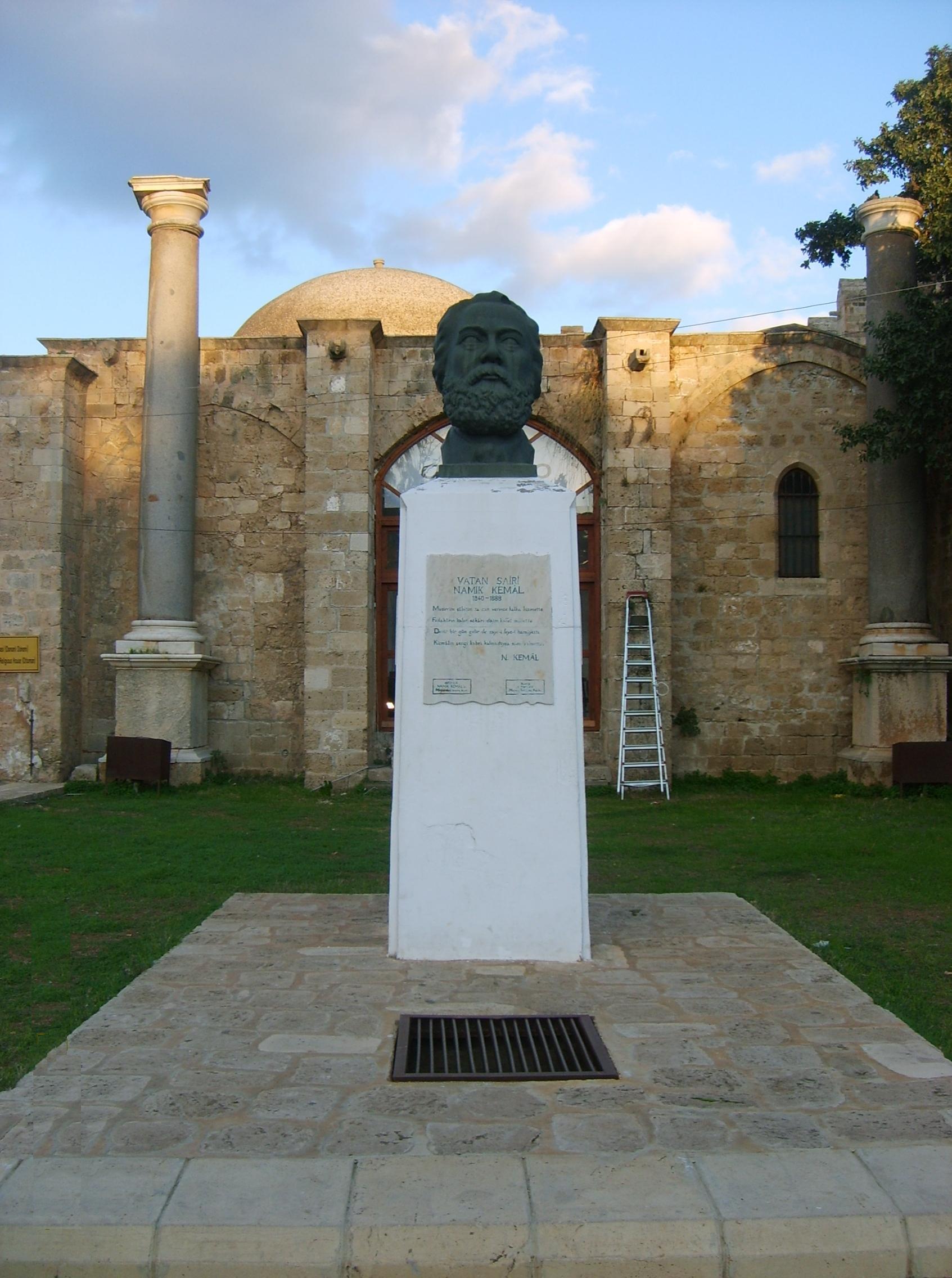 Namık Kemal Anıtı
Namık Kemal Anıtı
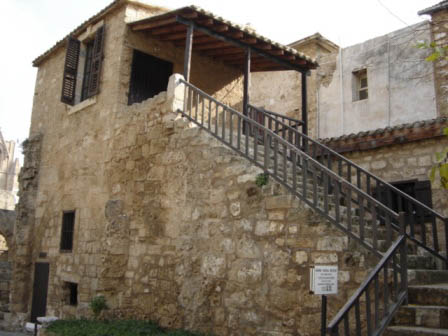
The dungeon where Namık Kemal was held
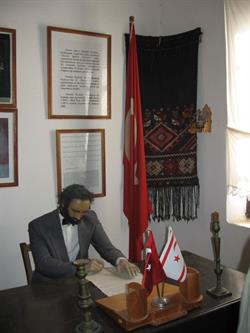
The mannequin above depicting Namık Kemal during his time in Famagusta
Namık Kemal Museum: The museum, which is an old dungeon located in the garden of the Venetian Palace, was named after Namık Kemal, the famous Turkish poet -also known as the poet of the homeland-, journalist, playwright, bureaucrat and leader of the Young Ottomans, who was imprisoned there in 1873. The only door of this dungeon named after Namık Kemal opens to the garden of the palace and today, the museum displays an arrangement and items depicting Namık Kemal's days there.
The development that led to Namık Kemal's exile to Gazimağusa was the great acclaim of the play "Vatan yahut Silistre" that he staged in Istanbul on April 1, 1873 and the interest shown by the public to Namık Kemal. Since Ottoman Sultan Abdulaziz interpreted the public's interest as a provocation, he exiled Namık Kemal to Gazimağusa and imprisoned him in the dungeon that is used as a museum today. Namık Kemal, who also served the Ottoman Empire as a bureaucrat, was the editor-in-chief of Tasvir-i Efkâr, the second private Turkish newspaper published in the Ottoman Empire, and even managed the newspaper when its owner, İbrahim Şinasi, fled abroad in 1865. He contributed to many Turkish newspapers published in Istanbul with his articles in the 1860s and 1870s. He also ensured the publication of the Young Ottomans' publication, Hürriyet Newspaper, in London and Paris between 1867 and 1871, when he fled abroad.
Othello Tower: The tower was built by the Lusignans in the 14th century to protect the port of Famagusta and was restored and strengthened by the Venetian Nicola Foscari. Above the entrance of the tower are reliefs showing the Lion of St. Mark, Nicola Foscari and the date 1492. The tower took its name from Shakespeare's famous work Othello, but it also inspired this work and became famous worldwide. The tragedy that Shakespeare tells in Othello was written based on the fact that Christopher Moro, the Governor of the Cyprus Region in 1506-1508, had his wife Desdemona killed in this tower because he was jealous.
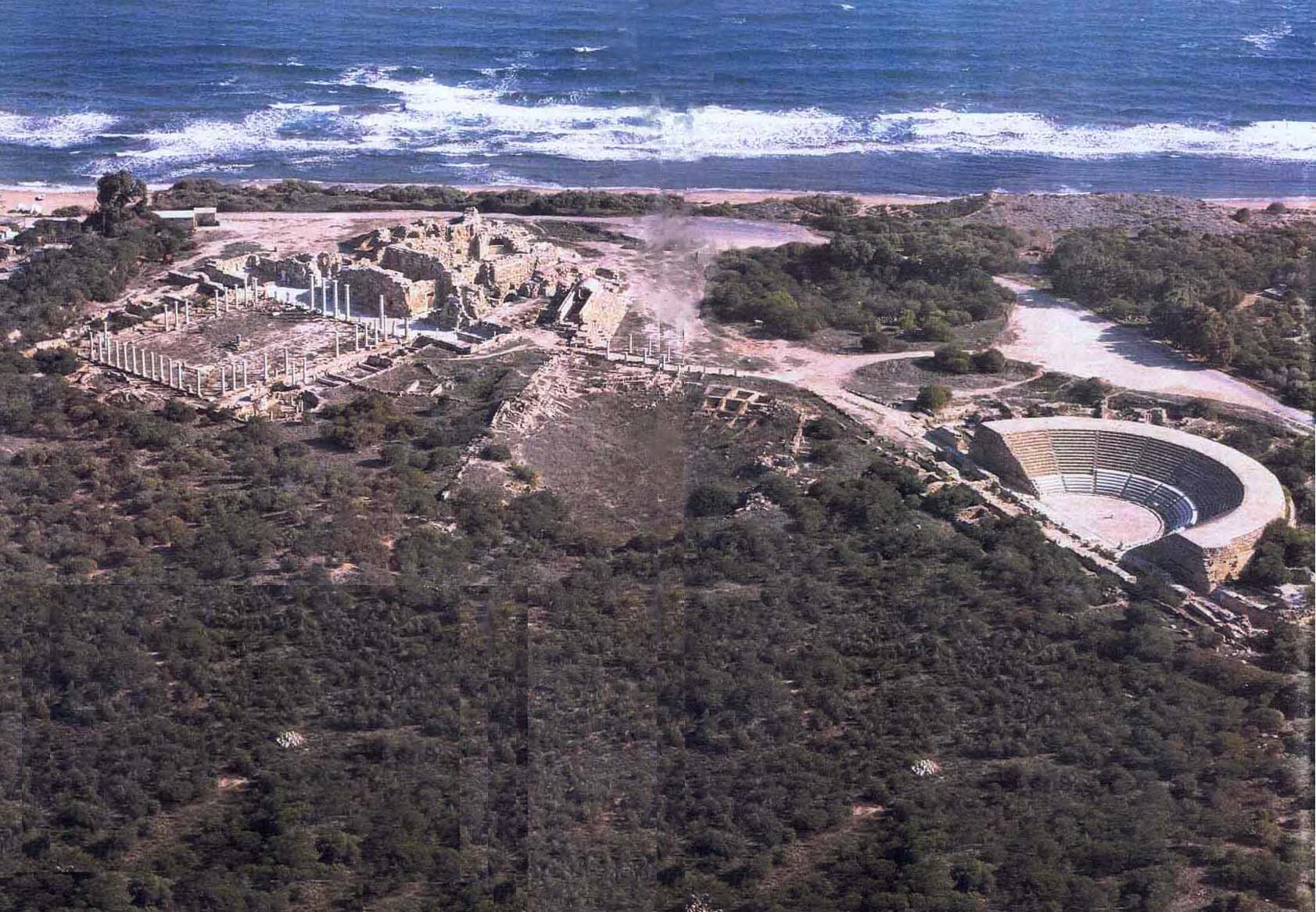
An aerial photo of the City of Salamis
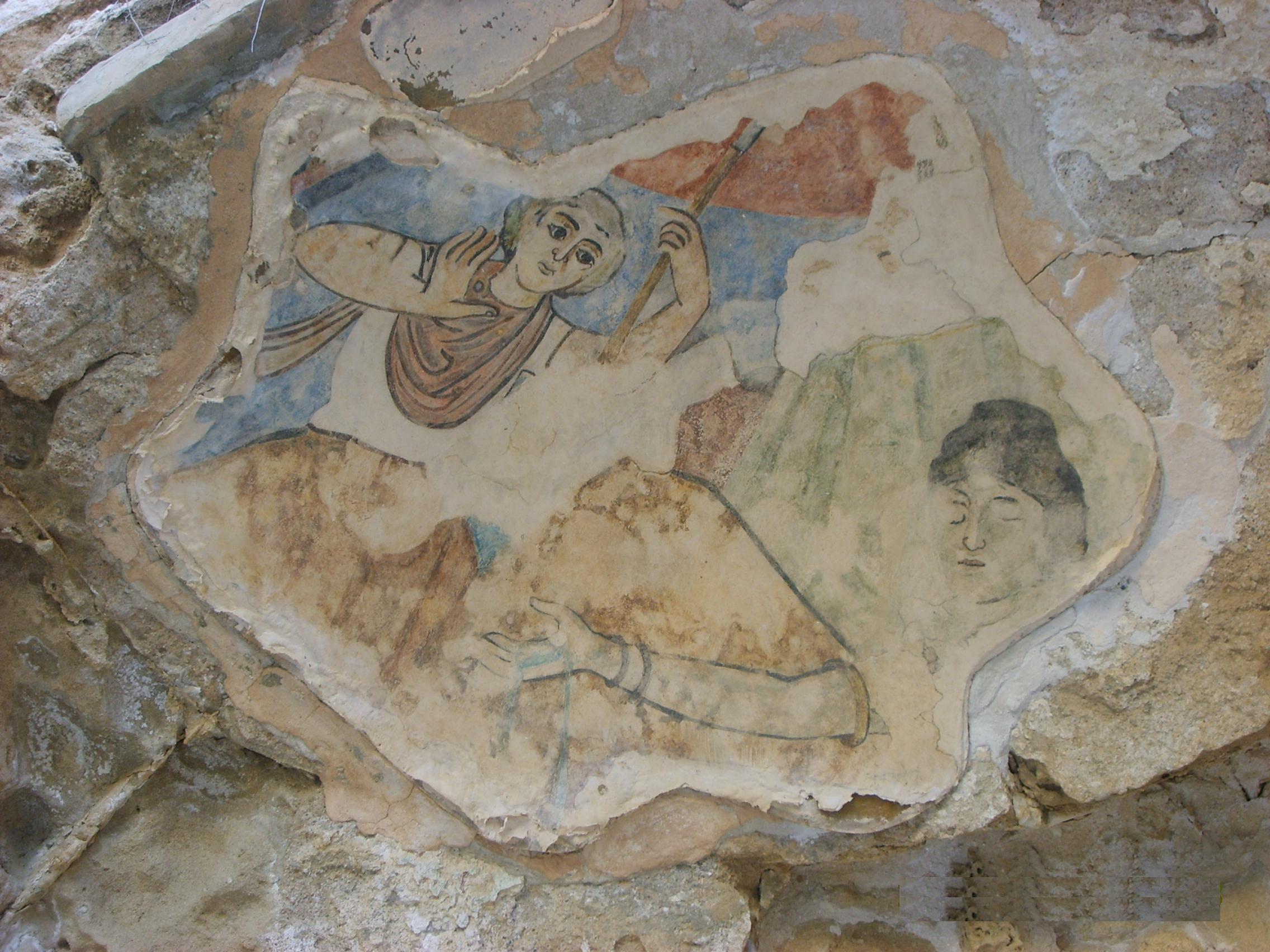 An example of floor mosaics found at Salamis
An example of floor mosaics found at Salamis
Salamis Ruins: The ancient city of Salamis, located 8 km north of the city of Gazimağusa, was founded by people migrating from Anatolia and Greece to the island of Cyprus towards the end of the Bronze Age. Salamis, which was also an important center during the period when the Assyrians captured the island of Cyprus, began to be ruled by the kingdom led by King Evalton in 560 BC after the Assyrians and was used as the capital of Cyprus for many years. There is also different information in mythology regarding the establishment of the city of Salamis. According to Greek mythology, Salamis was founded by the Trojan hero Teucer, who returned from the Trojan War. Teucer, the son of Salamis, the king of the island of Salamis, located far from the coast of Athens, was exiled by his country because he could not prevent the suicide of his brother Ajax. He came to Cyprus with a group of captives after the Trojan War and built Salamis, where he founded his own kingdom. The city became the most interesting but also the most attacked city in the Mediterranean region with its architecture and wealth. Severely damaged by earthquakes in 77 BC and 76 BC, Salamis was rebuilt by Emperor Constantine in the 5th century and was once again accepted as the capital of Cyprus. Thanks to the Jews living there, ancient Salamis became the center of trade in the Levant region of the Roman Empire. Although Paphos replaced Salamis as the capital during the Roman Period, Salamis preserved its splendor and remained a center of culture, education and trade. An earthquake in 15 BC destroyed Salamis, but Emperor Augustus paid special attention to the city and rebuilt it in the great Roman fashion of the time. A severe earthquake in the 4th century BC had a very bad effect on Salamis, and although attempts were made to revive the city, it never regained its former glory. However, a revolt by Jews living on the island in 115 AD resulted in both a massacre that almost significantly reduced the population of the city and the complete expulsion of the Jews from Cyprus. After the Arab invasion and several earthquakes in the 8th century, the city of Salamis was completely abandoned. When the port of Salamis filled with mud and sand in the Middle Ages, the city was abandoned due to the coastal sands that eventually buried it. However, although the splendor of the city was buried under the sands, archaeological excavations in the 20th century have revealed structures that show the splendor of Salamis from the Bronze Age to the period when the city was abandoned. Although the city was reduced to ruins by invasions and raids, these ruins still reflect the splendor of the city in the past. The ruins of Salamis include the Forum, the Roman Gymnasium, the Roman Theatre, the Agora (Pazaryeri), the Temple of Zeus and the tomb of the kings of Salamis.
Sinan Pasha Mosque (St. Peter and Paul Church-Twin Churches): Sinan Pasha Mosque was originally built in 1358 by a rich merchant in memory of St. Peter and St. Paul. It was converted into a mosque in 1571 after the Ottomans took Famagusta. In the courtyard of the mosque is the tomb of the famous Ottoman diplomat Çelebi Mehmet Efendi, who was the ambassador to France in 1730 and died in Famagusta in 1730.
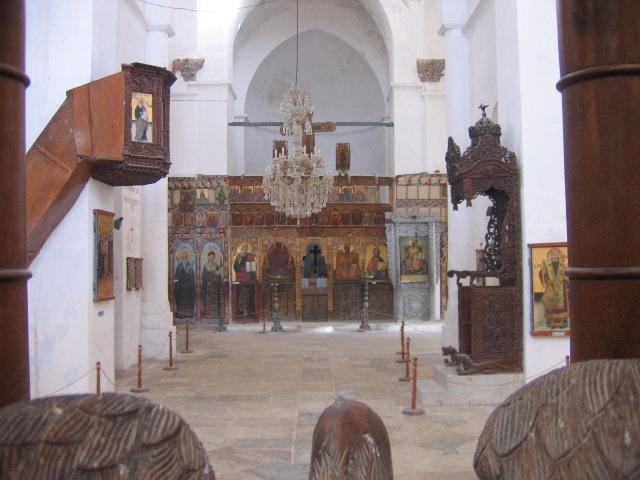
Interior of St. Barnabas Monastery and the icons on display
St. Barnabas Monastery: Built in the name of St. Barnabas of Cyprus, one of the saints who helped spread Christianity on the island of Cyprus, this monastery today serves as a museum with magnificent icons inside. The reason the monastery was built here is because St. Barnabas' tomb is here. According to sources, St. Barnabas was killed by his own fellow citizens in Salamis and his body was hidden in an underground cave west of the city. In 432, Bishop Anthemios said he saw the tomb in his dream and had it dug, and the tomb was brought to light. Upon hearing this, Byzantine Emperor Zenon granted autonomy to the Church of Cyprus and requested that a monastery be built where the tomb was located, and the monastery was built in 477.